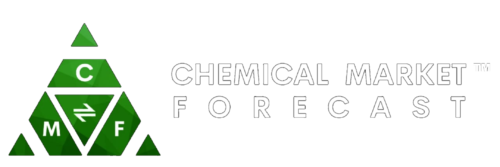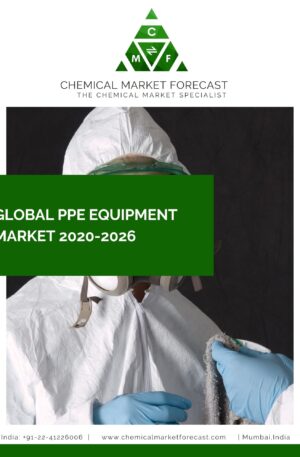Global Polyisobutylene Market Report
The Polyisobutylene (PIB) market refers to the market for a synthetic rubber used in a variety of industrial applications. Polyisobutylene is a polymer made from isobutene and is known for its versatility and elasticity.
The PIB market is expected to grow due to increasing demand for adhesives & sealants in the construction industry, the growth of the automotive industry, and the increasing use of PIB as a lubricant in various industries. The Asia-Pacific region is expected to see significant growth in the PIB market due to the presence of a large number of end-use industries in the region and increasing demand from countries such as China and India.
Some of the main applications of PIB include, Adhesives & Sealants: PIB is used as a key component in adhesives and sealants for various applications, including construction, packaging, and others. Lubricants: PIB is used as a lubricant in various industrial applications, including automotive, aerospace, and others. Others: PIB is also used in a variety of other applications, including fuel additives, cable insulation, and others. PIB has several advantageous properties, including good resistance to heat and chemical degradation, low volatility, and low permeability to gases and liquids. These properties make it an attractive material for use in a wide range of industrial applications.
However, the production of PIB is energy-intensive and results in the release of greenhouse gases, which can have negative environmental impacts. The use of PIB is also regulated by various government agencies, and industry standards for its production and use are established to ensure safety and environmental protection.
Geopolitical factors can significantly impact the trade of Polyisobutylene (PIB). Some of the key factors that can impact PIB trade include: Trade Wars: Trade tensions between countries can impact the trade of PIB by affecting the demand for and supply of the product in different regions. For example, if a country imposes tariffs on PIB imports, this can impact the trade of the product between countries. Sanctions: Political sanctions imposed by governments can also impact the trade of PIB. For example, if a government imposes sanctions on a country that is a significant supplier of PIB, this can affect the supply of the product and result in price increases. Regulations: Government regulations can also impact the trade of PIB. For example, if a government imposes strict regulations on the production or use of PIB, this can affect the trade of the product in that region. Currency Fluctuations: Fluctuations in the exchange rate of different currencies can impact the trade of PIB by affecting the cost of importing and exporting the product. Transportation: Geopolitical factors such as conflicts, embargoes, or other disruptions to transportation can also impact the trade of PIB by affecting the delivery of the product. Overall, the impact of geopolitical factors on PIB trade can be significant and can result in changes in demand, supply, price, and availability of the product in different regions.
Key players in the PIB market include ExxonMobil, BASF SE, The Dow Chemical Company, Royal Dutch Shell plc, and Kraton Corporation.
Table of Contents
Global Polyisobutylene Market Report
1 Market Introduction of Global Polyisobutylene Market Report
2 Market Segmentation of Polyisobutylene Market Report
2.1 Polyisobutylene Market Segmentation By Region
2.2 Polyisobutylene Market Segmentation By Type
2.3 Polyisobutylene Market Segmentation By Crop Type
3 Cost Structure of Global Polyisobutylene Market Report
4 Country Analysis of Global Polyisobutylene Market Report
4.1 China
4.1.1 Polyisobutylene Market Forecast & Size in China
4.1.2 Polyisobutylene Market Trends & Analysis in China
4.1.3 Key Polyisobutylene companies in China
4.1.4 Regulatory Framework of Polyisobutylene Market in China
4.2 Germany
4.2.1 Polyisobutylene Market Size in Germany
4.2.2 Polyisobutylene Market Trends & Analysis in Germany
4.2.3 Key Polyisobutylene companies in Germany
4.2.4 Regulatory Framework of Polyisobutylene Market in Germany
4.3 France
4.3.1 Polyisobutylene Market Size in France
4.3.2 Polyisobutylene Market Trends & Analysis in France
4.3.3 Key Polyisobutylene companies in France
4.3.4 Regulatory Framework of Polyisobutylene Market in France
4.4 Italy
4.4.1 Polyisobutylene Market Size in Italy
4.4.2 Polyisobutylene Market Trends & Analysis in Italy
4.4.3 Key Polyisobutylene companies in Italy
4.4.4 Regulatory Framework of Polyisobutylene Market in Italy
4.5 Netherland
4.5.1 Polyisobutylene Market Size in Netherland
4.5.2 Polyisobutylene Market Trends & Analysis in Netherland
4.5.3 Key Polyisobutylene companies in Netherland
4.5.4 Regulatory Framework of Polyisobutylene Market in Netherland
4.6 Russia
4.6.1 Polyisobutylene Market Size in Russia
4.6.2 Polyisobutylene Market Trends & Analysis in Russia
4.6.3 Key Polyisobutylene companies in Russia
4.6.4 Regulatory Framework of Polyisobutylene Market in Russia
4.7 Canada
4.7.1 Polyisobutylene Market Size in Canada
4.7.2 Polyisobutylene Market Trends & Analysis in Canada
4.7.3 Key Polyisobutylene companies in Canada
4.7.4 Regulatory Framework of Polyisobutylene Market in Canada
4.8 Mexico
4.8.1 Polyisobutylene Market Size in Mexico
4.8.2 Polyisobutylene Market Trends & Analysis in Mexico
4.8.3 Key Polyisobutylene companies in Mexico
4.8.4 Regulatory Framework of Polyisobutylene Market in Mexico
4.9 Singapore
4.9.1 Polyisobutylene Market Size in Singapore
4.9.2 Polyisobutylene Market Trends & Analysis in Singapore
4.9.3 Key Polyisobutylene companies in Singapore
4.9.4 Regulatory Framework of Polyisobutylene Market in Singapore
4.10 United Kingdom
4.10.1 Polyisobutylene Market Size in United Kingdom
4.10.2 Polyisobutylene Market Trends & Analysis in United Kingdom
4.10.3 Key Polyisobutylene companies in United Kingdom
4.10.4 Regulatory Framework of Polyisobutylene Market in United Kingdom
4.11 Switzerland
4.11.1 Market Size in Switzerland
4.11.2 Market Trends & Analysis in Switzerland
4.11.3 Key Polyisobutylene companies in Switzerland
4.11.4 Regulatory Framework of Polyisobutylene Market in Switzerland
4.12 Brazil
4.12.1 Market Size in Brazil
4.12.2 Market Trends & Analysis in Brazil
4.12.3 Key Polyisobutylene companies in Brazil
4.12.4 Regulatory Framework of Polyisobutylene Market in Brazil
4.13 USA
4.13.1 Market Size in US
4.13.2 Market Trends & Analysis in US
4.13.3 Key Polyisobutylene companies in US
4.13.4 Regulatory Framework of Polyisobutylene Market in US
4.14 Japan
4.14.1 Market Size in Japan
4.14.2 Market Trends & Analysis in Japan
4.14.3 Key Polyisobutylene companies in Japan
4.14.4 Regulatory Framework of Polyisobutylene Market in Japan
4.15 South Korea
4.15.1 Market Size in South Korea
4.15.2 Market Trends & Analysis in South Korea
4.15.3 Key Polyisobutylene companies in South Korea
4.15.4 Regulatory Framework of Polyisobutylene Market in South Korea
4.16 India
4.16.1 Market Size in India
4.16.2 Market Trends & Analysis in India
4.16.3 Key Polyisobutylene companies in India
4.16.4 Regulatory Framework of Polyisobutylene Market in India
4.17 Thailand
4.17.1 Market Size in Thailand
4.17.2 Market Trends & Analysis in Thailand
4.17.3 Key Polyisobutylene companies in Thailand
4.17.4 Regulatory Framework of Polyisobutylene Market in Thailand
4.18 Russia
4.18.1 Market Size in Russia
4.18.2 Market Trends & Analysis in Russia
4.18.3 Key Polyisobutylene companies in Russia
4.18.4 Regulatory Framework of Polyisobutylene Market in Russia
4.19 Malaysia
4.19.1 Market Size in Malaysia
4.19.2 Market Trends & Analysis in Malaysia
4.19.3 Key Polyisobutylene companies in Malaysia
4.19.4 Regulatory Framework of Polyisobutylene Market in Malaysia
4.20 Saudi Arabia
4.20.1 Market Size in Saudi Arabia
4.20.2 Market Trends & Analysis in Saudi Arabia
4.20.3 Key Polyisobutylene companies in Saudi Arabia
4.20.4 Regulatory Framework of Polyisobutylene Market in Saudi Arabia
5 Global Polyisobutylene Market Trends
5.1 Polyisobutylene Market Trends- Key Drivers
5.2 Polyisobutylene Market Trends- Key Restraints
5.3 Polyisobutylene Market Trends- Key Challenges
5.4 Porter’s Five Forces Analysis of Polyisobutylene Market
5.5 PEST Analysis- Polyisobutylene Market
6 Global Polyisobutylene Market Forecast
6.1 Global Polyisobutylene Market Forecast By Region
6.1.1 North America
6.1.2 Europe
6.1.3 APAC
6.1.4 Middle East
6.1.5 ROW
6.2 Global Polyisobutylene Market Forecast By Type
6.2.1 Fertilizer
6.2.2 Pesticide
6.3 Global Polyisobutylene Market Forecast By Crop Type
6.3.1 Fruits & Vegetables
6.3.2 Oilseed and Pulses
6.3.3 Cereals & Grains
6.3.4 Other
7 Supply Chain of the Polyisobutylene Market Analysis
8 Opportunity Analysis
9 Scenario Analysis
10 Key Company Profiles
11 Strategic Conclusions – Polyisobutylene Market Report
12 Abbreviations used in Polyisobutylene Market Report






Reviews
There are no reviews yet.